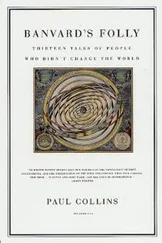Gary knew that the way you twisted the rabbit-ear antenna on top of the television would determine the clarity of the picture. His father had explained that television sets were powered by something invisible, similar to radio waves, that flew through the air and were somehow translated into an image. Gary had even carried out some rudimentary experiments. When you stood somewhere between the antenna and the television, you could make the picture go away. When you touched the antenna in certain ways, you made the picture clearer.
One day, on a whim, Gary unscrewed the antenna and placed his finger on the screw where the cable had been. What had been a mass of squiggles and static noise on the screen suddenly coalesced into a perfect image. Even at that young age, he had understood that he had witnessed something extraordinary about human beings: his body was acting like a television antenna, a receiver of this invisible information. He tried the same experiment with a radio – substituting his finger for the antenna, and the same thing happened. Something in the makeup of a person was not unlike the rabbit ears that helped produce his television image. He too was a receiver of invisible information, with the ability to pick up signals transmitted across time and space.
Until he was 15, however, he could not visualize what these signals were made of. He had learned to play the electric guitar and had often wondered what unseen influences allowed the instrument to create different sounds. He could play the same note, middle C, and yet produce more of a treble or bass sound, depending on which way he turned the knob. How was it possible that a single note could sound so different? For a science project, he created multiple-track recordings of his music and then located a company in upstate New York that had equipment designed to analyse the frequency of sound. When he fed his recordings into the equipment, it quickly deconstructed the notes down to their essence. Each note registered as a batch of squiggles across the screen of the cathode-ray tube in front of him – a complex mix of hundreds of frequencies representing a blend of overtones that would subtly change when he turned the knob to treble or bass. He knew that these frequencies were waves, represented on the monitor as a sideways S, or sine curve, like a skipping rope held at both ends and wriggled, and that they had periodic oscillations, or fluctuations, similar to the waves on Long Island Sound. Every time he spoke, he knew he generated similar frequencies through his voice. He remembered his early television experiments and wondered whether a field of energy pulsated inside him and shared a kinship with sound waves. 1
Gary’s childhood experiments may have been rudimentary, but he had already stumbled across the central mechanism of intention. Something in the quality of our thoughts was a constant transmission, not unlike a television station.
As an adult, Schwartz, still a bustling dynamo of enthusiasms, found an outlet in psychophysiology, then a fledgling study of the effect of the mind on the body. By the time he had accepted a post at the University of Arizona, which was known for encouraging freedom of research among its faculty, he had grown fascinated by biofeedback and the ways in which the mind could control blood pressure and a variety of illnesses – and the powerful physical effect of different types of thoughts. 2
One weekend in 1994, at a conference on the relationship between love and energy, he sat in on a lecture by physicist Elmer Green, one of the pioneers of biofeedback. Green, like Schwartz, had grown interested in the energy being transmitted by the mind. To examine this more closely, he had decided to study remote healers and to determine whether they sent out more electrical energy than usual while in the process of healing.
Green reported in his lecture that he had built a room whose four walls and ceiling were entirely made of copper, and were attached to microvolt electroencephalogram (EEG) amplifiers – the kind used to measure the electrical activity in the brain. Ordinarily, an EEG amplifier is attached to a cap with imbedded electrodes, each of which records separate electrical discharges from different places in the brain. The cap is placed on a person’s head, and the electrical activity picked up is displayed on the amplifier. EEG amplifiers are extraordinarily sensitive, capable of picking up the most minute of effects – even one-millionth of a volt of electricity.
In remote healing, Green suspected that the signal produced was electrical and emanated from the healer’s hands. The copper wall acted like a giant antenna, magnifying the ability to detect the electricity from the healers and enabling Green to capture it from five directions.
He discovered that, whenever a healer sent healing, the EEG amplifier often recorded it as a huge surge of electrostatic charge, the same kind of the build up and discharge of electrons that occurs after you shuffle your feet along a new carpet and then touch a metal doorknob. 3
In the early days of the copper wall experiment, Green had been faced with an enormous problem. Whenever a healer so much as wriggled a finger, patterns got recorded on an EEG amplifier. Green had had to work out a means of separating out the true effects of healing from this electrostatic noise. The only way to do so, as he saw it, was to have his healers remain perfectly still while they were sending out healing energy.
Schwartz listened to the talk with growing fascination. Green was discarding what might be the most interesting part of the data, he thought. One man’s noise was another man’s signal . Does movement, even the physiology of your breathing, create an electromagnetic signal big enough to be picked up on a copper wall? Could it be that human beings were not only receivers of signals but also transmitters ?
It made perfect sense that we transmitted energy. A great deal of evidence had already proved that all living tissue has an electric charge. Placing this charge in three-dimensional space caused an electromagnetic field that travelled at the speed of light. The mechanisms for the transmission of energy were clear, but what was unclear was the degree to which we sent out electromagnetic fields just by simple movements and whether our energy was being picked up by other living things.
Schwartz was itching to test this out for himself. After the conference, he contacted Green for advice about how to build his own copper wall. He rushed to Home Depot, which did not stock copper shielding but did have aluminium shielding, which could also act as a rudimentary antenna. He purchased some two by fours, placed them on glass bricks so that they would be isolated from the ground, and used them to assemble a ‘wall’. After he had attached the wall to an EEG amplifier, he began playing around with the effects of his hand, waving it back and forth above the box. As he suspected, the amplifier tracked the movement. His hand movements were generating signals. 4
Schwartz began demonstrating these effects in front of his students in his faculty office, making use of a bust of Einstein for dramatic effect. With these experiments, he made use of an EEG cap, with its dozens of electrodes. When not picking up brain signals, the cap will register only noise on the amplifier.
During his experiments, Schwartz placed the EEG cap on his Einstein bust, and turned on just a single electrode channel on the top of the cap. Then he moved his hand over Einstein’s head. As though the great man had suddenly experienced a moment of enlightenment, the amplifier suddenly came alive and produced evidence of an electromagnetic wave. But the signal, Schwartz explained to his students, was not a sudden brain wave emitted from the lifeless statue – only the tracking of the electromagnetic field produced by his arm’s movement. It seemed indisputable: his body must be sending out a signal with every single flutter of his hand.
Читать дальше











